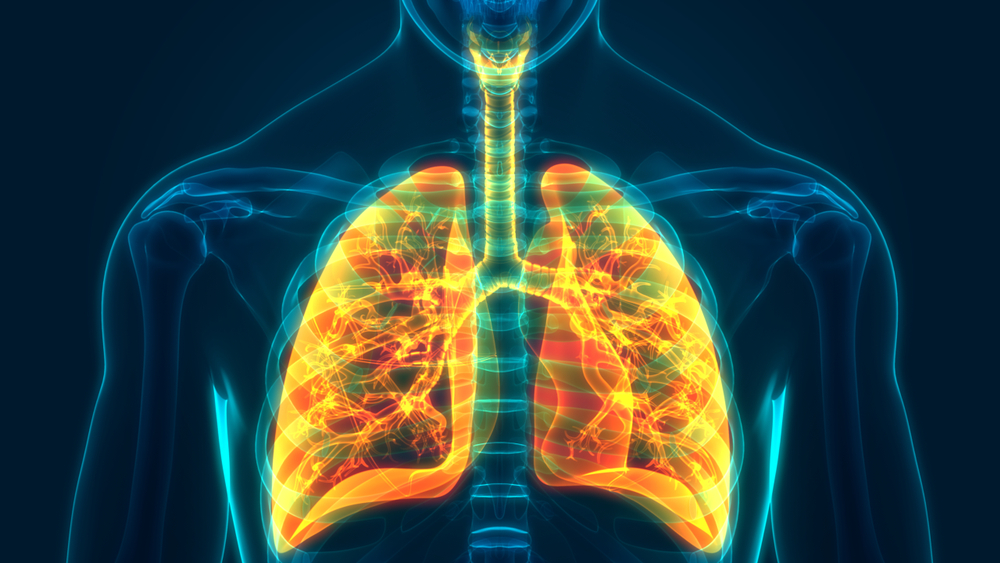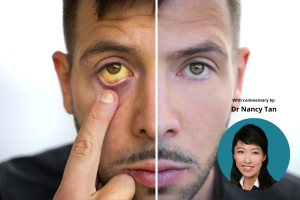Chronic Obstructive Pulmonary Disease (COPD) is a common chronic disease characterised by persistent respiratory symptoms and airflow limitations.
Dr Elizabeth Yu is a Pulmonologist with a subspecialty in Critical Care Medicine, affiliated with UCSF Health-UCSF Medical Center. She shares an overview of COPD: its causes, symptoms, diagnosis and treatment options.
In normal circumstances, every time a person breathes in, they exhale all the air they have inhaled. But people with COPD are not able to fully exhale everything. So imagine taking in a deep breath and then holding it, while breathing up and down with your lungs already full. This is what people with COPD have to do. Understandably, this can have a huge impact on their quality of life, including how they feel when they are breathing and the many other associated illnesses that can go along with COPD.
How is COPD different from asthma?
It can be very confusing as there are diseases where there is an overlap between the two. So you can have both COPD and asthma at the same time. COPD is an irreversible airflow obstruction whereas asthma is reversible. In COPD, the process of not being able to exhale all of the air cannot be fixed. On the other hand, in asthma, you can take medications or use an inhaler to get the air out. Asthma is related to inflammation and is easier to treat. Sometimes, asthma can also go away on its own. For example, you can outgrow childhood asthma as you get older or you can get treatment and asthma can get better. Unfortunately, COPD is a little bit trickier to treat and manage.
How common is COPD?
COPD affects over 5% of the population in the United States. It is ranked 4th as the cause of death in the US. Mortality rates in the US are also about the same as mortality rates in high-income Asian countries. Specifically in Singapore, COPD is the 6th leading cause of death.
What are the symptoms of COPD?
The three cardinal symptoms of COPD are shortness of breath, chronic cough and phlegm. COPD represents a spectrum of obstructive airway diseases. This means symptoms occur on a continuum and manifest in different degrees. People with mild symptoms might feel a little short of breath or have a little bit of cough. They might only feel the symptoms when they are exerting themselves, for example during exercise. In contrast, at the other end of the spectrum, the symptoms could be severe such that the person requires hospitalisation and intense medication or oxygen.
What is a COPD Flare Up?
A COPD flare-up is when regular symptoms get a lot worse than usual. For instance, when there is no flare-up, you would feel shortness of breath only when you are exercising. However, when you have a flare-up, you would feel shortness of breath even when you are just sitting still and not doing anything. Sometimes flare-ups can also cause serious coughing episodes and lots of phlegm, compared to your baseline when you only cough a little bit. Usually, COPD flares are triggered by infections – either viral or bacterial pneumonia. When the flare happens, it is important to treat the causative factor, which is usually the infection. After which, the doctor would treat the lungs to help with the airflow obstruction so that the person can exhale more air. This is done via a combination of steroids and antibiotics.
What are the complications of living with COPD?
COPD is linked with a lot of other health conditions, also known as comorbidities.
The most common would be lung cancer. There is a definite link between COPD and lung cancer. There is also a link between COPD and heart disease. This is because having a stressed-out lung all the time can translate to having a stressed-out heart. You can also have sleep-related breathing disorders like sleep apnea, diabetes, kidney problems, bone problems, and heartburn. Having these types of health issues can be linked with depression, anxiety, psychiatric disorders, and even cognitive dysfunction.
What causes COPD?
The most important risk factor for COPD is cigarette smoking. Although second-hand smoke and biomass fuel inhalation may also play a role, smoking is still the biggest risk factor. The more you smoke, the more likely you are to have worse or more severe COPD. The exact number of cigarettes and duration of smoking that would lead to COPD are not known because everybody’s body is different. Nonetheless, any amount of smoking is bad for your health and increases your risk of COPD. The best thing you can do for yourself is to avoid smoking.
Ageing is inevitable. As you age, your lung function will worsen. It is a normal part of ageing and would happen to everyone. However, if you smoke, the rate at which your lung function deteriorates is faster. If you stop smoking, you can slow down your rate of decline to match that of a healthy person. Your lungs may always be worse than a healthy person but they will not get as bad as if you continue to smoke. There is still a benefit to stopping cigarette smoking no matter what.
How is COPD diagnosed?
COPD diagnosis is usually based on symptoms. You can also do a pulmonary function test, which is a measure of your lung function. You have to sit in a box and breathe into a tube so that your doctor can measure how well your lungs are taking in air and exhaling air. If you do not exhale as much air as you inhale, and this phenomenon is not reversible even with inhalers, you probably have COPD. On the other hand, if you can exhale as much as you inhale after using an inhaler, it might be asthma. Usually, imaging studies like chest X-rays and CT scans are not necessary. The use of a CT scan would be to detect any emphysema, which is a potential complication of COPD. Emphysema is damaged lung tissue that causes holes in the lungs. If emphysema is detected, it is almost definitive that you have COPD.
How do you treat COPD?
1. Smoking Cessation
The first thing you can do to treat COPD is to stop smoking.
2. Inhalers
A combination of inhalers can also be used to keep the airways as open as possible, relax them and help you to exhale all of the air.
3. Pulmonary rehabilitation
This is also helpful and is a special exercise programme for people with lung diseases. You can learn how to be more efficient with your breathing so you do not feel a shorter breath. Pulmonary rehabilitation can also strengthen important large muscle groups so that they are more efficient at using the oxygen that you give them.
4. Supplemental oxygen
In more severe diseases, people need supplemental oxygen via oxygen tubing placed around the nose. This is especially important when you are up and moving around and need some extra oxygen.
5. Mask
If the COPD is too severe and you are holding on to way too much air, you might have to wear a mask at night to help you sleep. It is the same type used by those with sleep apnea but the mask is to help you exhale the air while you are sleeping so air does not build up overnight.
Can COPD be cured?
Unfortunately, once you have COPD, it cannot be cured as the damage is irreversible. Nonetheless, COPD is treatable. Smoking cessation and the methods discussed above can help to slow down the rate of decline to match that of a normal person.
How are COPD and lung cancer linked?
Everybody is different. It does not mean just because you smoke, you will have COPD or lung cancer. That being said, smoking is still the biggest risk factor for both COPD and lung cancer. Similarly, just because you have COPD does not mean that you will have lung cancer or vice versa. Nonetheless smoking and having COPD increase the risk of lung cancer.
What lifestyle changes can be considered for people with COPD?
You should consider smoking cessation and staying as active as possible. It is important to keep your heart and muscles healthy. This is in line with the idea behind pulmonary rehabilitation, which is keeping your muscles as efficient as possible so that the lungs are using the oxygen you are getting as smartly as possible. In terms of diet, there is no evidence that eating a particular food or avoiding any particular food group is beneficial for COPD. More importantly, it is recommended to eat a well-balanced diet. To summarise, for people with COPD, it is important to stay cardiovascularly fit and eat a well-balanced diet.











